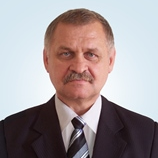Current Advances in Coordination and Bioinorganic Chemistry
A special issue of Inorganics (ISSN 2304-6740). This special issue belongs to the section "Coordination Chemistry".
Deadline for manuscript submissions: 30 September 2024 | Viewed by 2462
Special Issue Editors
Interests: infrared spectroscopy; transition metal chemistry; copper and cobalt complexes
Special Issues, Collections and Topics in MDPI journals
Interests: computational chemistry; spin crossover; single molecule magnets
Special Issues, Collections and Topics in MDPI journals
Special Issue Information
Dear Colleagues,
We hereby invite you to share your current advances in coordination and bioinorganic chemistry, two fields which fascinated the brilliant mind of our former colleague—Professor Ján Gažo. Starting exactly sixty years ago as a satellite symposium associated with the International Conference on Coordination Chemistry (ICCC), Professor Ján Gažo founded what later became known as the International Conference on Coordination and Bioinorganic Chemistry (ICCBIC). Since then, ICCBIC has established its reputation as the only scientific event in the field organized regularly at the same place (Castle of Smolenice, Slovakia). As the number of participants at the castle is very limited, we are pleased to extend this wonderful tradition into the electronic space of the journal Inorganics.
Prof. Dr. Peter Segľa
Dr. Ján Pavlik
Guest Editors
Manuscript Submission Information
Manuscripts should be submitted online at www.mdpi.com by registering and logging in to this website. Once you are registered, click here to go to the submission form. Manuscripts can be submitted until the deadline. All submissions that pass pre-check are peer-reviewed. Accepted papers will be published continuously in the journal (as soon as accepted) and will be listed together on the special issue website. Research articles, review articles as well as short communications are invited. For planned papers, a title and short abstract (about 100 words) can be sent to the Editorial Office for announcement on this website.
Submitted manuscripts should not have been published previously, nor be under consideration for publication elsewhere (except conference proceedings papers). All manuscripts are thoroughly refereed through a single-blind peer-review process. A guide for authors and other relevant information for submission of manuscripts is available on the Instructions for Authors page. Inorganics is an international peer-reviewed open access monthly journal published by MDPI.
Please visit the Instructions for Authors page before submitting a manuscript. The Article Processing Charge (APC) for publication in this open access journal is 2700 CHF (Swiss Francs). Submitted papers should be well formatted and use good English. Authors may use MDPI's English editing service prior to publication or during author revisions.
Keywords
- electronic, molecular and crystal structures
- solution and solid-state reactivity
- applied inorganic and coordination chemistry
- complexes in human medicine and the environment
Related Special Issue
- Recent Progress in Coordination Chemistry in Inorganics (11 articles)






